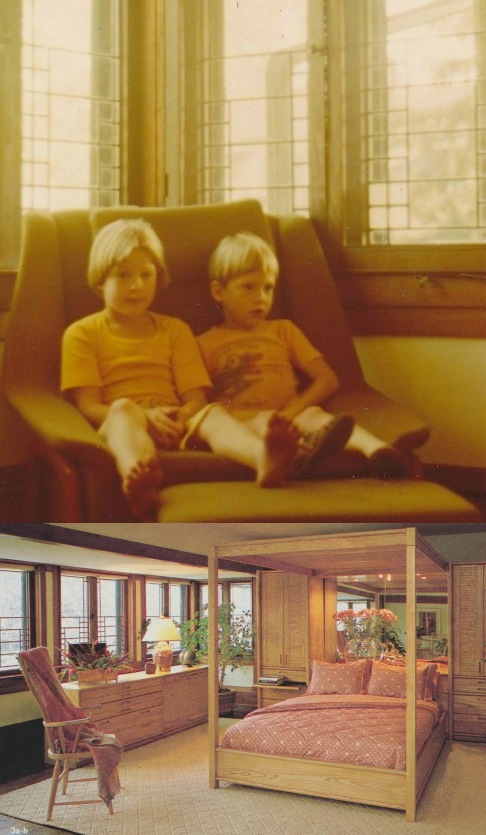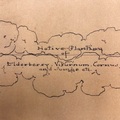
The book features many personal photographs from Bixler, her family and other owners that add to the rich history of this magnificent home, built in 1908. Kim and her brother, Kurt, are shown above, while the staged photo below appeared as part of a Sibley’s department store catalog.
Courtesy of Kim Bixler
About a year ago, I had the pleasure of touring the magnificent E.E. Boynton House, the only structure designed by Frank Lloyd Wright in Rochester. A typical Prairie Style dwelling with its art glass windows, horizontal lines and central hearth, the house was then in the midst of a much-needed rebirth, courtesy of new owners Fran Cosentino and Jane Parker. Before I left, Cosentino summed up their goal: “To pay as much respect to Frank Lloyd Wright’s work as we could, but at the same time make it a livable, modern dwelling for us.”
Those words stuck with me as I wrote my piece, “Frank Lloyd Wright in Rochester,” for our Summer 2012 issue (copies still available). Unlike the Darwin Martin House in
Several weeks after the issue hit newsstands, my answer came in Kim Bixler’s wonderful new book, Growing Up in a Frank Lloyd Wright House. Bixler’s family purchased the house in 1977 when she was just eight years old, and stayed until after she graduated college. Part-memoir and part-history, Bixler recalls everything from childhood games of hide-and-seek to, as I expected, giving “The Grand Tour” to a lucky few of the architecture students or tourists that showed up. Among other interesting anecdotes, readers learn:
- Sibley’s department store once staged and shot its catalogue inside the Boynton House.
- To future owners’ horror, Arlene Howard, homeowner from 1943 to 1968, painted much of the interior “poodle gray,” including the fireplace.
- Louie Clark, owner from 1974 to 1977, had a connection to the original owners – his grandparents were the Boyntons’ neighbors before Edward and Beulah Boynton moved to the Wright house.
Through historical research and interviews with several former owners, Bixler also illustrates the downside to living in this historic house, whose architect often valued form over function. Not built for harsh East Coast winters, it was difficult to heat and needed constant, expensive repairs. For some owners, this became too much to handle; Gordon Nye and Kathleen McGillivray moved there in 1994 and left within a year, allowing it sit vacant and rapidly deteriorate for almost two years.
In addition, the book offers a mini-lesson on historic preservation. Historians and preservationists have long fought to save the house, which was first designated a
This eclectic mix of informative histories and amusing stories is accompanied by dozens of photos that show visually how the property evolved over time. Bixler, who had the same bedroom Beulah Boynton did in 1908, also includes Wright’s original floor plans, which give readers a sense of space.
The author also appeared in a PBS documentary on the Boynton House and has booked speaking engagements in WNY this month. For more information or to purchase a copy, visit www.kimbixler.com.









